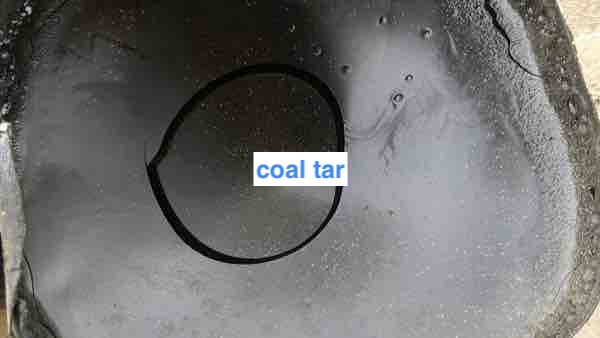
Coal tar content
Coal tar used in this invention, especially the use of coal tar containing 44-75% cyclic compounds, the present invention is used in asphalt-containing polycyclic compounds> 30-60%, coal tar and coal tar pitch of accounting and 10- 100%. Coal tar and asphalt dissolved in a solvent, coal tar and asphalt content in the solvent is 8-90%, especially 10-30%.Coal tar is a bitumen derived from crude coal tar, water gas tar, oil gas tar or from combination of such tars with their constituents. Coal tar is a black and like gilsonite , viscous, naphthalene-like odor, amorphous residue mainly from distillation of coal.
Composition of coal tar
The majority of its composition is poly nuclear aromatic compounds such a aromatic hydrocarbon, naphthalene, phenolic, anthracitic, quinolone compound with trace of insoluble materials. Different grades have different float tests and softening points. Although this invention is not constrained to, the preferred coal tars have a float test at 122 degrees F., seconds: ranging from about 75 to about 230 seconds and more preferably from about 180 to 220 seconds and conform in general to specification outlined by RT-10 (Road tar-10) RT-11 and RT-12 in ASTM D490.
Coal tar is a thick, black, viscous liquid derived from the distillation of coal. It is a byproduct of the production of coke and coal gas from coal. Coal tar contains various organic compounds, including polycyclic aromatic hydrocarbons (PAHs), phenols, and heterocyclic compounds, which contribute to its characteristic odor and propertie
Uses of Coal Tar
Coal tar is used in the treatment of skin conditions like psoriasis, eczema, and seborrheic dermatitis. It helps reduce scaling, itching, and inflammation.
Shampoos and Ointments
It is an ingredient in medicated shampoos and ointments for treating dandruff and other scalp conditions.
Production Process of Coal Tar
The production of coal tar involves several stages, starting with the carbonization of coal to produce coal tar. This coal tar is then subjected to distillation, resulting in different fractions, including coal tar peetch. The distillation process ensures the removal of unwanted impurities, yielding a high-quality final product suitable for various uses.
Coal tar pitch is obtained by the distillation of coal tar, a byproduct of the production of coke from coal. During the carbonization process, coal is heated in the absence of air, leading to the formation of coke and coal tar. The coal tar is then distilled to remove the lighter oils, leaving behind the heavier, viscous coal tar pitch.
Properties of Coal Tar Pitch
Coal tar pitch is a black, viscous substance with a high carbon content. It has a complex chemical composition, including polycyclic aromatic hydrocarbons (PAHs), phenols, and other organic compounds. Its unique properties, such as high binding capability and thermal stability, make it ideal for various industrial applications.
Industrial Uses of Coal Tar Pitch
Aluminum Production
One of the primary uses of coal tar pitch is in the aluminum industry, where it serves as a binder for the production of carbon anodes. These anodes are crucial for the electrolytic reduction of alumina to aluminum. The binding properties and thermal stability of coal tar pitch make it the preferred material for this application.
Graphite Electrode Manufacturing
Coal tar pitch is also used in the production of graphite electrodes, which are essential for electric arc furnaces in steel manufacturing. The pitch acts as a binder, ensuring the integrity and performance of the electrodes under high-temperature conditions.
Roofing and Waterproofing
In the construction industry, coal tar pitch is used in roofing and waterproofing applications. Its waterproofing properties make it an excellent material for protecting structures from water damage. Coal tar pitch is often mixed with other materials to enhance its performance and durability.